The creation of heaven and earth
Terranigma is an SNES Action RPG with a flawed translation. Characters occasionally act in ways that defy logic, and plot threads appear to contradict each other. Terranigma is also, without question, one of the best narratives I’ve experienced in a video game. For this reason, I put it in the Top 3 of the greatest SNES games ever made.
Terranigma is the culmination of what is referred to as developer Quintet’s “Soul Blazer trilogy” on the SNES. Though it’s technically canon to Soul Blazer and Illusion of Gaia, Terranigma‘s connection to these games is mostly on a philosophical level (though you’ll find a couple plot connections). You see, Quintet had the unique objective of using their 16-bit titles to explore the core of human nature. For Terranigma specifically, director Tomoyoshi Miyazaki expressed the desire to show humanity from “the perspective of the Earth, and how it views human activity.”
If you haven’t played the game, this may sound like a strange, abstract concept. However, Terranigma achieves this lofty goal in spades. Not because the game tells you this theme outright, but because it lets you subconsciously feel it with its music, visuals, and gameplay systems. The result is an adventure so unbelievably nuanced that thousands of words could be written to unpack it.
Because of this, telling you that this game must be interpreted in a specific way would do it a disservice. However, I can tell you what struck me deeply during my playthrough of Terranigma in 2023. I hope this context will inform you of not just why this cult classic means a lot to me, but countless others who were lucky enough to play it.
NOTE: The following will allude to key moments of Terranigma’s plot, including the structure of its late game.
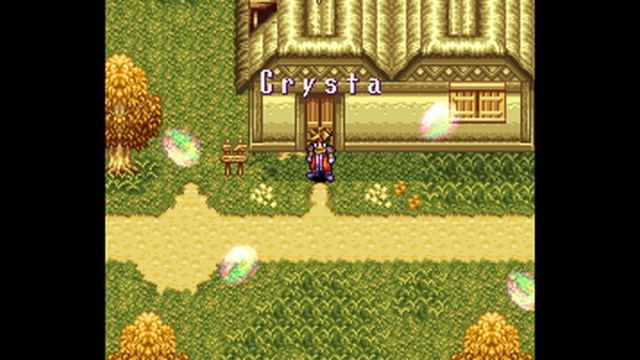
The sounds of home
Terranigma’s early game is all about creating moments that give context to the late game. Much like our own lives, we don’t realize how precious our childhood memories are until we look at them in retrospect. To this end, “Home” is a key concept in Terranigma, and what better way to establish this connection than through a song?
The theme of protagonist Ark’s hometown Crysta is the first song you’ll hear upon starting a new file. At first brush, this is a calming, quintessential “first town” song for an RPG. The violin and woodwind instruments are beautiful and comforting, like a hug you don’t want to let go of. But there are a few touches that allude to the events that are to come.
The first is the reverb on the guitar, which is most notable at the song’s beginning. This effect contrasts with the warmth of the other instruments, making the listener feel as if they’re far away from the sound’s origin. The second is the percussion imitating a door that cleverly creaks right before the tune’s hook. The developers of Terranigma cite “Duality” as a key theme of the game, and this first song demonstrates it overwhelmingly. As warm as this home is, it is also quaint and antiquated. Its place in our lives is fleeting, and holding onto it is like gripping sand as it slips through your fingers.
This one song alone informs us of the heartbreak at the core of Terranigma’s story.
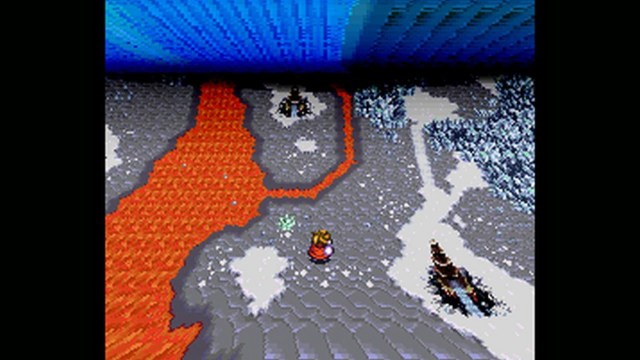
The first steps of our journey
Of course, the Crysta theme is far from the only song Terranigma is known for. After triggering a series of events that traps the souls of everyone in the Underworld, our protagonist Ark sets out on a journey to save them. He doesn’t want to be a hero; he just wants to reset everything back to the way it was. With a path newly opened out of his village, Ark takes his first steps towards the world outside.
Even if you’ve never played Terranigma before, you’ve likely heard the Underworld theme. It’s an immediately striking piece that stands with the works of Yasunori Mitsuda and even Nobuo Uematsu. Continuing with the theme of “Duality,” the track feels inspiring and sad in equal measure. The somber tone of the song’s first seconds are punctuated with a bell, signaling the dawn of a new day. Yet the bell fades away as the track progresses, giving way to horns that should sound heroic. A feeling of melancholy hangs over the track, just as the echo of a world you don’t recognize hangs above the Underworld.
As Chapter One reaches its climax, Ark learns his true destiny. He must herald the rebirth of Earth’s surface, much in the same way he seemingly saved the Underworld. Before he leaves, we hear the theme song of Ark’s beloved, Elle. This, too, is a deeply melancholic tune, starkly contrasting songs like the Theme of Love from Final Fantasy IV. That we hear this track now, despite knowing Elle for the duration of Chapter One, foreshadows what Elle means to Ark. Elle and Crysta are inextricably linked for Ark, and he desires to return to them more than anything.
“For just a short while, goodbye.” With Elle’s final words in his heart, Ark ventures towards the surface world.
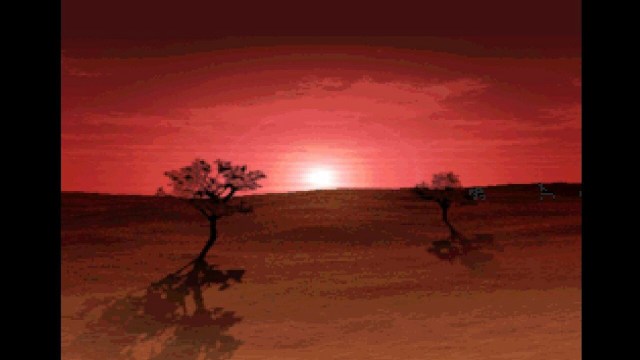
The views of adolescence
Throughout Chapters One and Two of Terranigma, we witness elaborate “Resurrection” sequences. As Ark frees both lands and souls alike through his actions, these cutscenes linger on the world in its natural state. From the moon above Africa to giraffes running across a savanna, the Resurrection scenes are unlike anything on the SNES. This is for good reason; these sequences alone took up 8MB of the cart’s total 32MB space.
Yet the developers felt that Resurrections, which seem superfluous at first glance, were “deeply connected to the concept and theme [of Terranigma].” Like the music, the visuals here exist to create powerful memories in the player. We so often see Earth populated by human settlements that we forget what it looked like before we existed. These moments force us to sit with our own thoughts and ruminate on Earth’s natural beauty. The rain in South America is gorgeous. The snow in Eurasia is marvelous. A plant emerging from the earth for the first time is momentous and is worthy of celebration.
The small things in life we take for granted are wonderful. Our world is incredible, and Terranigma is filled with love for our planet. These ordinary places are as epic as any fantasy world ever created, and sometimes, we need to sit in these spaces to appreciate how magical they are.
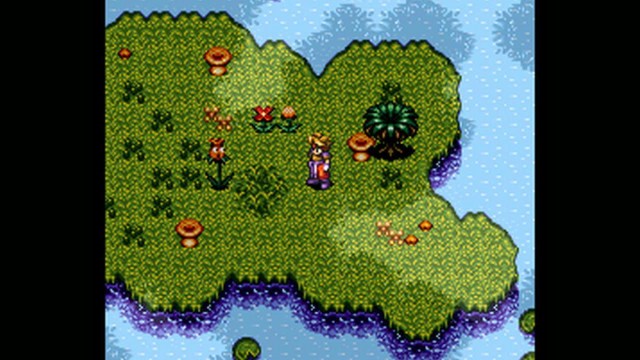
The thoughts of maturity
These themes arguably reach their peak near the beginning of Chapter Two. After traveling to a barren Earth, Ark battles through the corruption to bring the first traces of life back to the world. Once the first dungeon is cleared, Ark finds himself in a place called “Evergreen” (or “Evegreen,” due to translation issues). In contrast to the game’s first chapter, this moment is among the happiest and most peaceful within Terranigma.
A land once desolate and lonely now abounds with plants that gleefully talk to you. Flowers dance on the ground, happy to be alive again. The waters are clear, perfect for a swim if you feel like jumping in. Even if you don’t, the elaborately animated greenery will entertain you and keep you company.
The music also deserves mention, as this too is a celebrated track in the game. If you’ve been alone with nature on a warm day as the breeze gently caresses your skin, this is what Terranigma evokes here. The beauty is palpable, and you’re the one who fostered its existence. In a literal sense, you’re the guardian of the life in front of you. While most games frame the planet as a mother figure, Terranigma subtly flips this framing on its head. The thoughts that build up in your head aren’t unlike a parent gazing at their child, in awe of the majesty and fragility of what is in front of you.
But just as a home so easily can slip away, so too will we lose moments like this. The plants ask you to return more life to the world, as their existence feels lonely without the animals they loved in a previous life. The trajectory of the world is established, and you have no choice but to see it to its logical conclusion.
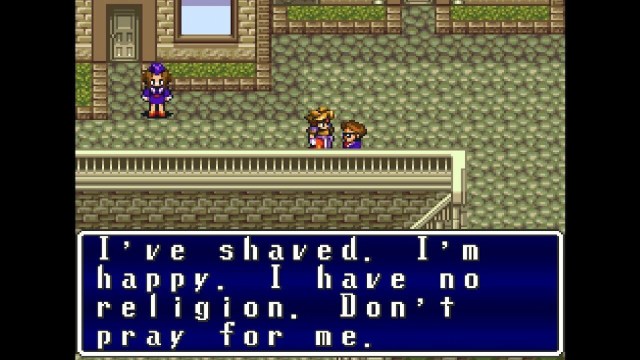
The complexity of the world
The beginning of Terranigma’s third chapter marks a dramatic, fundamental change to the game. Humans once again walk the earth, and with them comes much more complexity. To this point, the game has been a straightforward, action-packed dungeon crawler that drops challenge after challenge in front of you. Now, advancing the story requires attending to the needs of society.
Sidequests become abundant, tasking you with fulfilling everyone’s individual aspirations. Towns have economic indexes, measuring success by levels of prosperity. Your path is no longer laid out in front of you, sometimes forcing you to traverse the entire world to find your next destination. The planet is alive, but you aren’t the center of its attention anymore. That idyllic, natural world you once knew is no more.
In its place is a host of NPCs who vocalize their dreams for the future. You’ll find a painter who wishes to share their art with the world. Elsewhere, you’ll find someone with aspirations of selling their town’s local sardines across the ocean. By completing these quests, entire towns will evolve. Quaint villages will eventually become sprawling cities, with modern amenities like electricity and airplanes. If you’re familiar with the progression of Quintet’s Actraiser, the cities evoke that game’s simulation sections.
Though this, those feelings of fostering the world like a child intensify. Your natural inclination is to see these sidequests to their end, because why wouldn’t you want to help those around you? Chapter Two conditioned you to fulfill the wishes of all living things, but in this case, humans are complex. As the game itself says, “Humans are wonderful animals with the ability to create technology. But they have no idea of the vast power they wield.”

The morality of adulthood
There’s a small moment in Terranigma’s opening that sticks with me in retrospect. One of the first NPCs you meet is a woman with a boiling pot on the stove. She asks you to bring her a vase, as she can’t take her eyes off her cooking. However, if you pick up the vase and try to give it to her, Ark will throw the pottery instead.
After she chastises you, you might write this off as a funny tutorial showing you how to pick up and throw objects. However, if you think harder about this moment, its meaning becomes insidious. You meant to give her the vase. Your intentions were pure. But the game doesn’t let you give her the vase. You might believe this outcome was your fault, but what choice did you have? You could have avoided her request entirely, but you only have that wisdom in retrospect.
I know that sounds like I’m reading too hard into a small joke. Except Chapter Three of Terranigma proves that the underlying system of society is inherently unfair. As you aid the emerging civilization, your outcomes often don’t match your expectations. Sure, that sardine guy is happy that his business is booming. But if you return to that painter after you help him become famous, he takes no joy in his work anymore. Instead, he feels like a slave to capitalism, working himself to the bone to meet the newfound demand.
For every person you help, there’s another person who wishes life would go back to the way it was. In many ways, everyone is at war with time itself. We just want things to return to the way they were, but every minute pushes that dream further and further away.
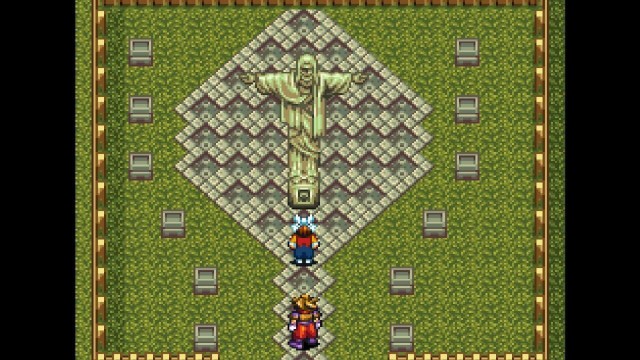
The consequences of our actions
Despite all this, the hardest part of Chapter Three is watching your own work from Chapter Two unravel.
The animals and wilderness you befriended suffer as civilization develops. Some creatures are put into zoos, where onlookers can’t help but express how sad they look. Others are sold on the black markets. You can still undo some of the damage at this stage. One poacher can be paid off with a healthy sum of money, letting you free a former friend. But these moments are few and far between. What’s done cannot be undone.
Depending on how Chapter Two resonated with you, you may feel tempted to hate humans here. But there is careful framing to show that humans are not universally bad. Some lives are better off. Progress will happen, whether you’re there to see it or not. And if you want 100% completion, you will have to see all these sidequests to the end.
Is there an ideal point at which you should stop completing sidequests to create the “happiest” world? Terranigma doesn’t have any interest in entertaining this question. Like the vase-throwing in Chapter One, it simply throws you into its system and forces you to make that judgment call. When the outcome you want is literally unobtainable, what choice do you really have?
Like in real life, many of our choices have no “perfect good” outcome. To eat, we must consume. To make, we must take. Many video games play with player choice, but few deliberately stack the deck against you like Terranigma does. These complex feelings of benefiting some while harming others is core to the experience Quintet produced, and these come to a head in the game’s dramatic conclusion.
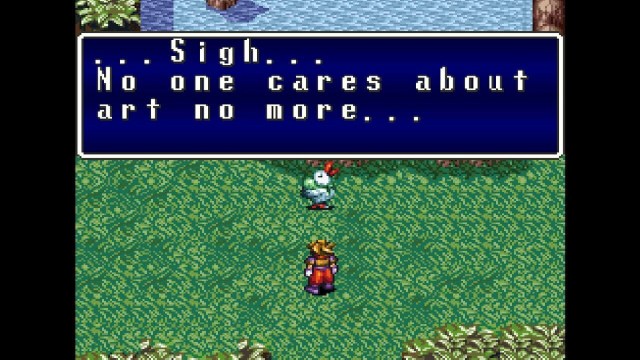
The inevitability of the end
I won’t spoil the final chapter of Terranigma. It’s special and unique in ways that you should experience blind, even if you’ve read everything up to this point. Instead, I will touch on the question Terranigma asks in its final moments, as it’s one of the hardest I’ve seen tackled in a video game.
Was my life worthwhile?
Like everything in Terranigma, this does not receive a specific answer. Instead, we see a beautiful credits sequence that lets us draw our own conclusion. Without our influence, the world continues to grow. Except Terranigma frames our technology as a spectacle like the Resurrection sequences we haven’t seen since Chapter Two. Birds fly alongside trains, lights illuminate the night, and skyscrapers extend to the heavens. All of this is accompanied by a peaceful track that uses motifs of the songs from Chapter One, as if to tell us that Ark finally found his way home.
Life is messy and complicated. Despite our best intentions, we will hurt others around us. Our goals will slip away, and the world we loved in the past can’t be reclaimed. Yet through this ending sequence, we’re reminded that we aren’t the sum of our failures. Even when the world wears our imperfections, its beauty shines through in the end. Our beauty shines through in the end. And at the end of our lives, the last thing we should feel is regret. Our sheer existence, for as brief as it lasts, is a miracle.
As long as you followed your heart and did what you truly believed to be best under impossible circumstances, your life had meaning. Or, to quote some of the last words Terranigma gives us, “There isn’t a single person that is unnecessary.”
Rest soundly, Ark. You’re home now.













Published: May 5, 2023 03:00 pm